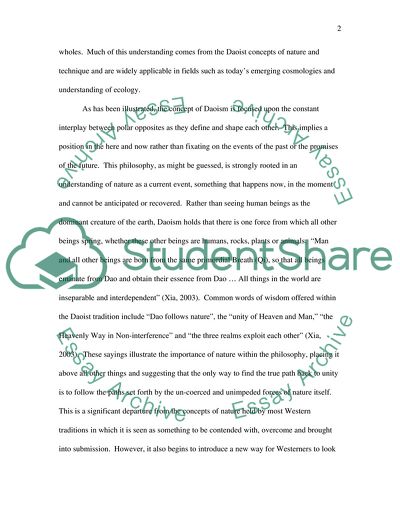Cite this document
(Daoist Concepts and Todays Thought Essay Example | Topics and Well Written Essays - 2250 words, n.d.)
Daoist Concepts and Todays Thought Essay Example | Topics and Well Written Essays - 2250 words. Retrieved from https://studentshare.org/philosophy/1709901-the-meaning-of-daoist-concepts-of-nature-andor-technique-and-their-possible-inspirations-for-todays-cosmology-or-ecology
Daoist Concepts and Todays Thought Essay Example | Topics and Well Written Essays - 2250 words. Retrieved from https://studentshare.org/philosophy/1709901-the-meaning-of-daoist-concepts-of-nature-andor-technique-and-their-possible-inspirations-for-todays-cosmology-or-ecology
(Daoist Concepts and Todays Thought Essay Example | Topics and Well Written Essays - 2250 Words)
Daoist Concepts and Todays Thought Essay Example | Topics and Well Written Essays - 2250 Words. https://studentshare.org/philosophy/1709901-the-meaning-of-daoist-concepts-of-nature-andor-technique-and-their-possible-inspirations-for-todays-cosmology-or-ecology.
Daoist Concepts and Todays Thought Essay Example | Topics and Well Written Essays - 2250 Words. https://studentshare.org/philosophy/1709901-the-meaning-of-daoist-concepts-of-nature-andor-technique-and-their-possible-inspirations-for-todays-cosmology-or-ecology.
“Daoist Concepts and Todays Thought Essay Example | Topics and Well Written Essays - 2250 Words”. https://studentshare.org/philosophy/1709901-the-meaning-of-daoist-concepts-of-nature-andor-technique-and-their-possible-inspirations-for-todays-cosmology-or-ecology.


